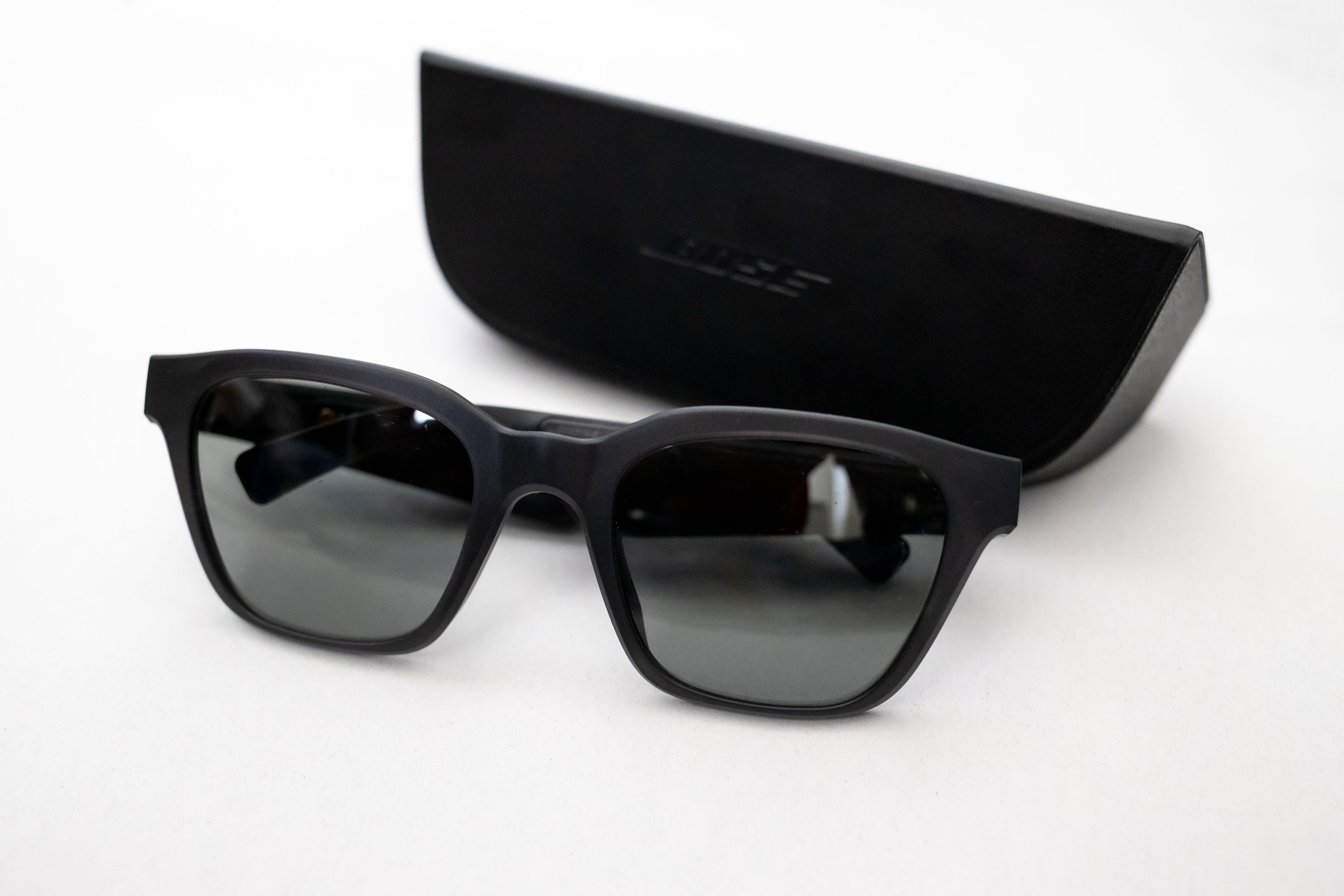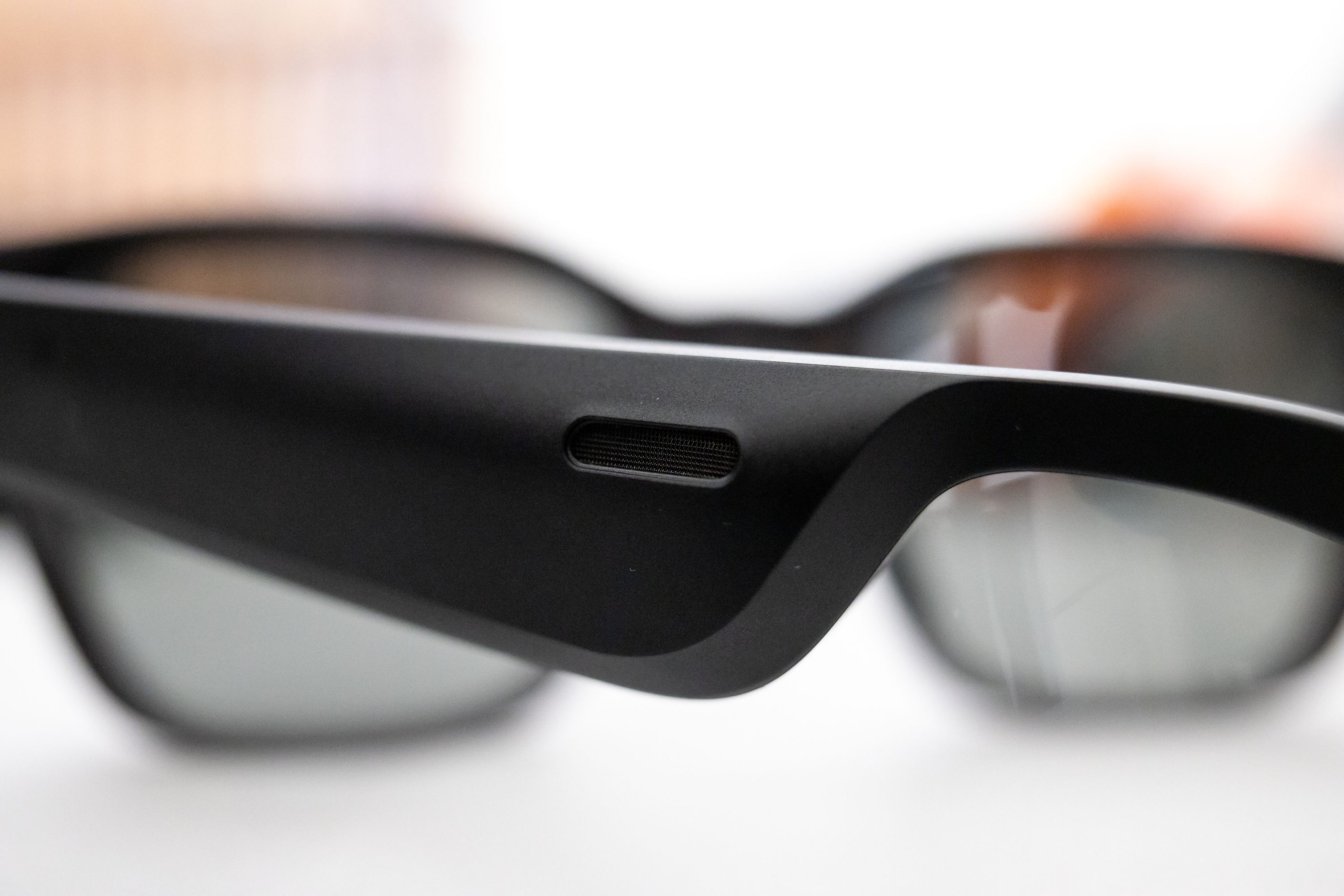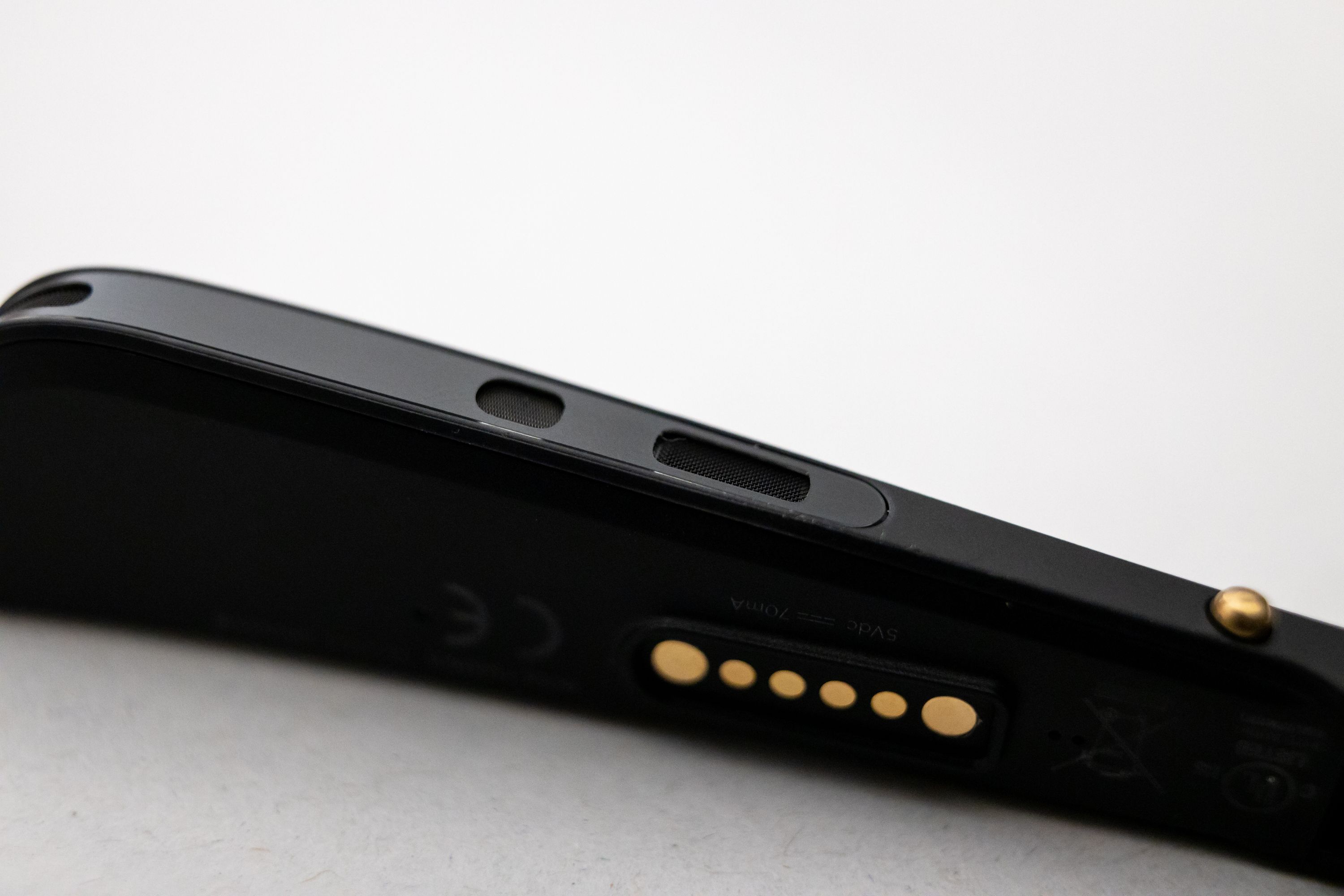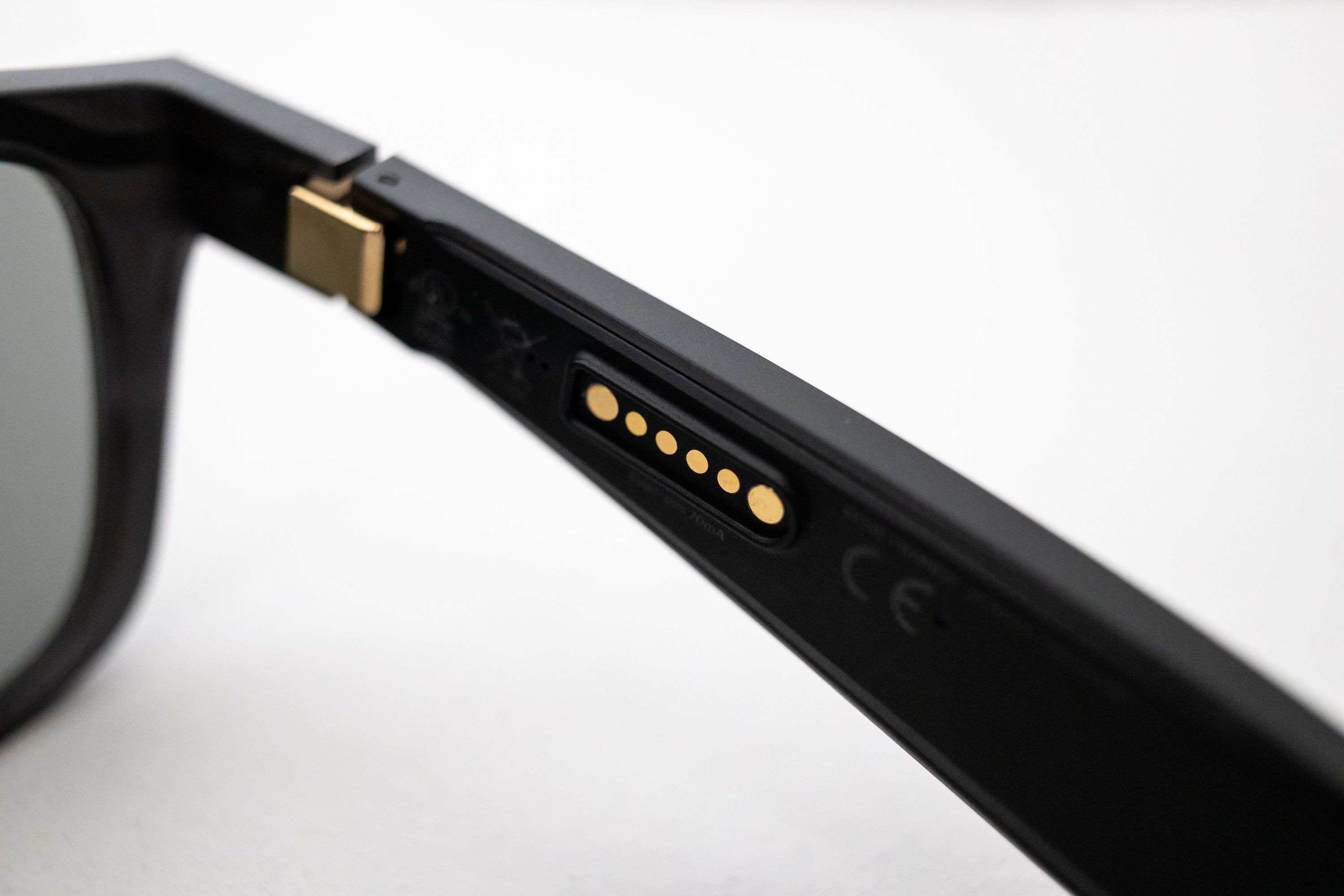Bose Frames
Trading style for sound with Bose’s smart sunglasses

I don’t know what’s gotten into the water supply at Bose lately, but whatever it is has led to a burst of interesting, innovative, and experimental products.
The latest to emerge are the Bose Frames, a pair of sunglasses with built in speakers that pipe audio to your ears in a way that only you can hear.
What you need to know is this: they work surprisingly, freakishly well, so if you find a good fit and can put up with the styling, they’re a great way to minimize your daily carry.
Design and Comfort
Bose have created two variants of the Frames, called Alto and Rondo. Rondo are smaller and rounder, while Alto have a wider fit and larger lenses—they’re the pair I picked.
You can change lenses for either option, swapping in a gradient blue or polarized silver option for a slightly different look, but you get proper UVA/UVB protection regardless of what lenses you choose.
The entire body is made of a hard material, with nylon rims, plastic body, and gold-brushed stainless steel hinges. The result is a pair of sunglasses that feel light but become fatiguing rather quickly.

It may just be a matter of fit for me, but I found the Frames became somewhat uncomfortable after the first ten or twenty minutes, so they never quite disappeared in the way I was hoping they might.
Some of the discomfort was on the bridge of my nose, and that I expect could be mitigated by adding some foam pads, but I also felt a bit of discomfort behind the ears, so really the entire experience was a letdown on the comfort front.
The fact that Bose managed to pack the technology that they did into such a svelte frame is admirable, but sadly the design doesn’t adequately camouflage the fact that these are geeky tech sunglasses.
For anyone with long hair, the issue is somewhat mitigated because the hair can hide the chunky part of the hinge, but you’re still left with frames that look sort of…cheap? I understand why they went with thick plastic as it makes the transition to the thicker electronics enclosure more subtle, but fundamentally these are just not stylish sunglasses.
Whether or not that matters to you is a different story, but the positive take-away is that style and comfort are the only downsides to the Bose Frames—it’s all uphill from here.
Sound
My favourite thing to do while testing the Frames was to gently offer them to people around me. It’s like a magic trick.
They can suddenly hear my podcast or music clearly and loudly, while the rest of us aren’t even aware they’re listening to something. A lot of people asked me if it’s bone conduction, but it isn’t—it’s just tiny little speakers playing audio directly into your ear. It’s very impressive, and the way it works is clever.
Generally speaking, active noise cancellation works by recording the sound around you and then playing a phase-inverted copy of that audio into the headphones. When you invert an audio signal and play it back over the original, the two signals cancel each other out, resulting in silence. Since the inverted audio being piped in is outside noise, all that’s left in your headphones is the actual music or other audio signal you intend to hear, with all the ambient audio from the world greatly reduced.
For the Frames, Bose is doing this in reverse: it’s taking the signal that you’re listening to—music, podcast, etc.—and then playing a phase-inverted copy of it back out into the world. The result is near silence, to the point where someone has to be right beside you and you have to be listening to something quite loud for them to be able to tell that there’s audio coming from the Frames.
It’s remarkable and even after weeks of use I still enjoyed the sheer technological coolness of it.

The sound itself is good, but not really comparable to headphones. There’s a distinct lack of low frequencies, so bassheads will want to look elsewhere, but everything else is actually balanced and well-tuned.
Personally, I only wanted these for podcast listening while out on walks, so the lack of bass was entirely irrelevant to my usage. I found I had plenty of volume to spare and I only noticed distortion when I pushed it much louder than I would ever need.
Functionality and Lifestyle
Bose Frames are appealing for two main reasons: one less thing to carry, and the ability to hear your audio without blocking any outside sound while you do it.
The former is great for folks who regularly bring headphones/earbuds and sunglasses with them wherever they go. My AirPods are hardly a burden, but not having to pop them out of their case, put them in my ears, and then also equip my sunglasses is one of those tiny little luxuries that adds up over time.
The Frames are effortless to operate; there’s a well-defined gold button on the right hinge that turns them on, and you get a spoken message about what device it’s connected to and how your battery is doing.
Turning them off is a little strange if you want to do it manually since you have to take them off and hold them upside-down for a couple of seconds, but I used the Bose app on my phone to set the auto-off to 5 minutes and then never worried about manually turning them off again.
Battery life is terrific, giving me a solid week of use without much effort, which is good because charging is a bit slow and requires a proprietary magnetic clip that attaches to the hinge. I wish the included carrying case had some extra charge to offer as well, as that would essentially remove the need to bring the charger on short trips away from home.

One other subtle thing I noticed is that taking calls on them is weird. The calls themselves sound great—both for me and the people I was speaking to—but unlike headphones or earbuds, there’s nothing familiar to signal to others that you might be on a call. Walking around on a call with the Frames really does look like you’re talking to yourself, so expect a few sideways glances.
Who Are These For?
The Bose Frames are the definition of a niche product.
To really get the most out of them, you need to be the sort of person who regularly goes out with sunglasses and headphones, who wants to carry less and doesn’t mind the design, and whose listening habits don’t require deep bass or passive isolation of sound from the outside world.
That doesn’t really describe me, but luckily for Bose I think it describes most of Silicon Valley’s working class, so I imagine they’ll do just fine.
Even if they don’t, and even though I didn’t end up keeping my pair, I really want to emphasize how happy I am that Bose is taking chances, trying new things, and exploring the wearable space with things like the Sleepbuds and these Frames. I want to see more companies being bold like this, because it’s these sorts of experiments that lead to breakthroughs that change everything.
I returned my pair, but would buy a slimmer revised model in a heartbeat, if only to support the creative energy behind this company’s recent products.